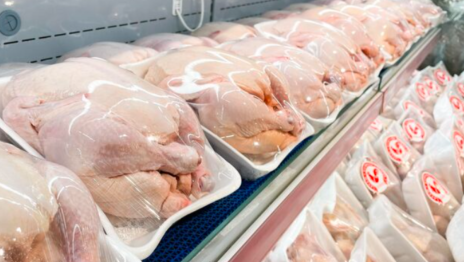
Shoppers preparing for Thanksgiving this year are finding welcome relief in the form of discounted turkeys, although many traditional holiday staples continue to rise in price due to ongoing bird flu outbreaks, tight supplies and tariff-linked manufacturing costs.
Retailers across the United States have launched aggressive promotions to cushion rising food prices, yet the overall market remains highly uneven, according to recent industry and economic reports.
Although whole turkeys are expected to cost more this season because bird flu cases are climbing again, major grocery chains have offset much of the increase by releasing significant markdowns. A handful of stores are even offering turkeys for free within bundled meal deals.
However, the same price relief has not extended to many canned, packaged and processed foods, where production costs have risen alongside higher prices for steel and aluminium, both of which are essential for food canning.
Big Retailers Keep Turkey Prices Down Despite Higher Wholesale Costs
Aldi, Kroger and Walmart have each unveiled Thanksgiving meal bundles designed to keep holiday meals affordable for families.
• Aldi is offering a £30.50 meal kit (approximately $40) that includes 21 items for 10 people.
• Kroger's store-brand menu is priced at £38.12 (about $50).
• Walmart's Thanksgiving basket is roughly 25 per cent cheaper than in 2024, although it contains fewer items than last year's version.
These promotions contrast sharply with wholesale pricing trends. According to the Chicago Tribune, wholesale turkey prices have surged by 81 per cent compared with last year.
Analysts attribute this increase to reduced production and repeated bird flu outbreaks that continue to crowd the US poultry market.
The Tribune also reports that nearly two million turkeys have been affected by avian influenza since August. This represents roughly a quarter of all newly infected poultry in recent months, with Minnesota bearing the brunt of the outbreak after more than 716,000 turkeys were infected or exposed.
Despite the surge in infections, frozen turkeys remain relatively affordable because major retailers locked in their supplies eight to ten months ago at lower contract prices.
Fresh turkeys, however, are significantly more vulnerable to market volatility. National retail figures show that fresh whole turkeys rose by 12.5 per cent during the second week of November.

Bird Flu, Secondary Viruses and Meat Market Shifts Tighten Supply
Avian influenza remains the leading force behind this year's sharp rise in wholesale prices. Experts interviewed in regional reports confirm that the current strain of bird flu has persisted far longer than earlier seasonal outbreaks.
This year's challenges are compounded by avian metapneumovirus, another illness affecting turkey breeder hens.
The virus disrupts egg-laying, reducing the number of birds entering the supply chain. Because each breeder hen accounts for dozens of turkeys, these disruptions have long-term implications for future production.
At the same time, higher beef prices are shifting consumer demand. Retail analyses indicate that beef costs were up around 14 per cent in September compared with the previous year, leading many households to turn to turkey as a more affordable protein.
As livestock economist Mark Jordan explained in an earlier AP report, many families are unwilling to pay more than £23.90 per pound (about $30) for premium beef cuts, further increasing the demand for turkey at a time when supplies remain tight.
Tariffs and Weather Drive Up Prices for Thanksgiving Staples
While retailers are absorbing part of the cost of turkey, other holiday ingredients are becoming more expensive as manufacturers contend with rising input costs.
Industry economists say tariffs on imported steel and aluminium have increased the price of canned goods, with shoppers now paying an estimated 7 to 31 pence more per can (equivalent to 10 to 40 cents).
Cranberry sauce has seen one of the steepest price increases. Market trackers report that prices have jumped 38 per cent compared with last year. A drought in key growing regions has also reduced US cranberry output by approximately nine per cent, according to recent agricultural assessments.
Pumpkins, however, have moved in the opposite direction. Dry weather has benefited growers in major pumpkin-producing states, allowing farms to avoid the wet-season diseases that typically harm crops. Analysts say pumpkin pie mix is five per cent cheaper than last year, offering at least one modest win for consumers.
A Mixed Thanksgiving Market for 2025
Despite generous turkey promotions, the wider Thanksgiving market remains unpredictable. Bird flu waves, secondary infections, tariff pressures and shifting consumer behaviour continue to shape the outlook for holiday food costs. For many families, the turkey on the table may be cheaper this year, but the rest of the meal is becoming more expensive, creating a patchwork of bargains and rising prices as the holiday approaches.
Originally published on IBTimes UK















